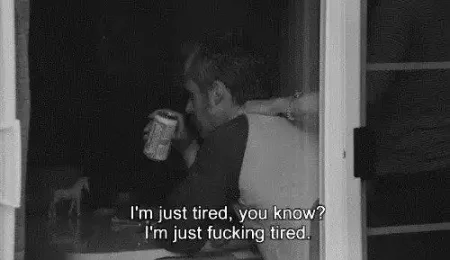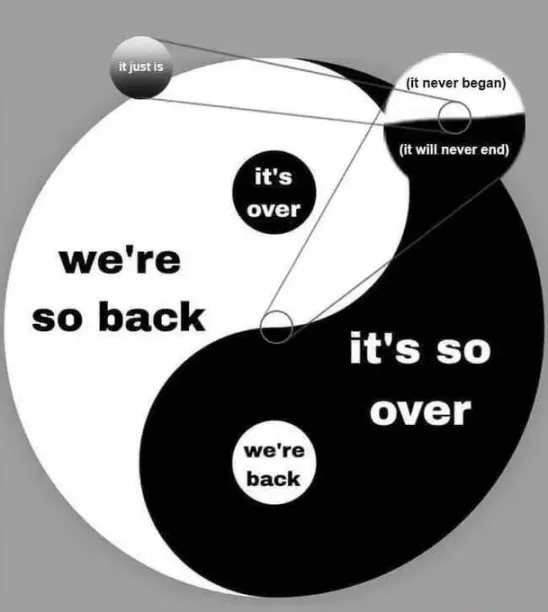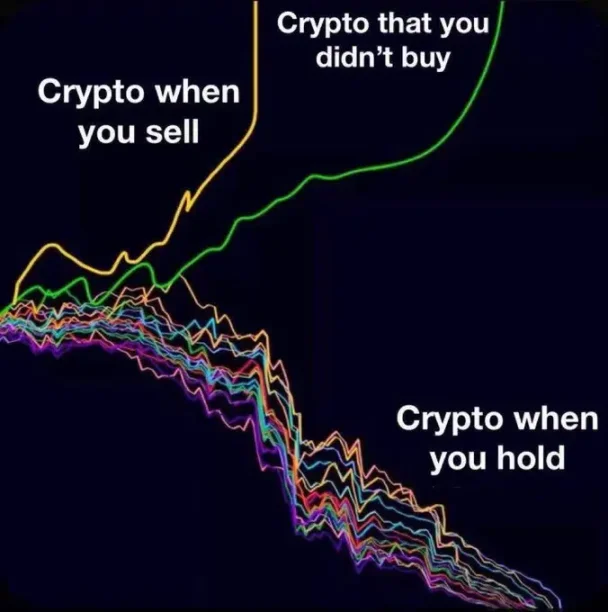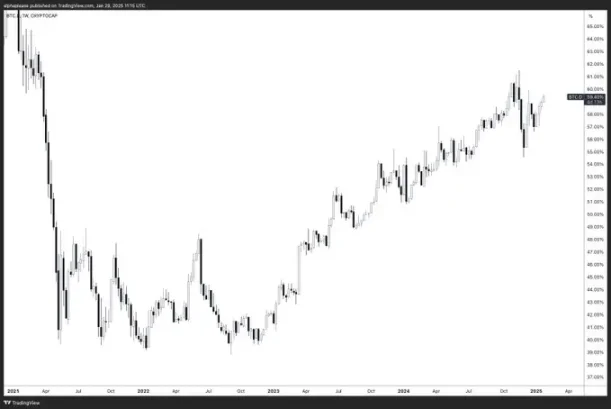Author: Steady Dog Diary
First of all, this cycle is tough. But the fact is that each cycle is harder than the last. You are competing with a larger crowd, and the number of experienced players is also increasing. If you didn't hold most of your BTC or SOL during the bear market, you probably didn't make any money and are suffering.

So why is this cycle so difficult?
1. Post-traumatic stress disorder
We have two examples of large altcoin cycles where most are down 90-95% and prices may even drop lower than they should due to the liquidation of Luna and FTX which has infected the entire sector. This PTSD has deeply affected the crypto natives.
No one wants to hold onto anything for the long term because they never want to lose a chunk of their portfolio again. Emotions are more volatile and everyone is constantly searching for the top of the cycle.

The psychological impact is not limited to trading behavior, but also affects the entire ecosystem of how it is built and invested. Projects now face greater scrutiny, and the threshold for trust has increased exponentially. This has both positive and negative effects: while it helps filter out obvious scams, it also makes it harder for legitimate projects to gain traction.
2. Innovation
There are more iterative innovations, and the infrastructure is constantly improving, but there is no 0->1 and jaw-dropping breakthrough like DeFi. This makes it easier for people to argue that cryptocurrencies have not made progress, etc., and also leads to more statements like "cryptocurrency has accomplished nothing."
The innovation landscape has shifted from revolutionary breakthroughs to incremental improvements. While this is the natural evolution of any technology, it creates challenges for narrative-driven markets.
We still lack the breakthrough applications that are necessary to bring cryptocurrencies to hundreds of millions of on-chain users.
3. Regulation
The corrupt SEC has wreaked havoc. They have held back the industry and prevented certain industries that could have had more PMF and a wider audience (like DeFi) from growing further. They have also prevented all governance tokens from delivering any value to holders, thus creating the narrative that “all these tokens are useless,” which is somewhat true.
The SEC drove away builders (see Andre Cronye’s account of how the SEC forced him to resign), prevented TradFi from interacting with the industry and ultimately forced the industry to raise money from VCs, and created a poor supply and price discovery dynamic where value was captured by a small number of people.
4. Financial nihilism
All of the above factors have led to financial nihilism being a significant factor in this cycle. The high FDV, low float dynamic created by “useless governance tokens” and the SEC has driven many crypto natives to turn to memecoin in search of a “fairer” opportunity.
It is also true that in today’s society, with asset prices soaring, fiat currencies depreciating, and wages not keeping up, young people have to resort to gambling to get rich, so memecoin lotteries are attractive. Lotteries are always attractive because they give people hope.
Because gambling has PMF in crypto, and we have better technology for gambling (Solana and Pump.fun, etc.), the number of tokens issued has skyrocketed. This is because a lot of people want to do super gambling. There is such a demand.
“Trenches” has always been a word in crypto, but in this cycle it has become a widely understood term.
This nihilistic attitude manifests itself in the following aspects:
- The rise of "degenerate" culture, becoming mainstream
- Shorten investment period
- More focus on short-term trading rather than long-term investing
- The normalization of extreme leverage and risk-taking
- Take a "don't care" attitude towards fundamental analysis
5. Experience from the previous cycle is an obstacle
The past few cycles have taught you that you can buy some altcoins in a bear market and eventually reap the rewards by outperforming BTC.

Almost no one is a good trader, so this is the best option for most people in the past. In general, even the worst alternatives have a chance.
This cycle is a trader’s market, and sellers are more suitable than holders. Traders even received the biggest gains in this cycle through the HYPE airdrop.
The first hype cycle for AI Agents is an example of this. This was probably the first time people felt like “this is the new thing we’ve been looking for.” It’s still early days, and the long-term winners may not have emerged yet.
6. BTC has new buyers, while altcoins mostly don’t
The divide between Bitcoin and everything else has never been more stark.
BTC unlocks bids for TradFi. It has an incredible new source of passive demand for the first time, and now central banks are discussing adding it to their balance sheets.
Altcoins are having a harder time than ever competing with BTC, which makes sense since BTC has a clear goal of reaching a market cap comparable to gold.
There really aren’t any new buyers for altcoins. Some retail investors are returning at new BTC highs (but they bought XRP), but overall there isn’t enough new retail flow and crypto still has a reputation problem.
7. The changing role of ETH
The decline in BTC dominance is largely influenced by the growth in ETH market cap. Many people believe that the trigger for “altcoins” is the rise in ETH, but this heuristic has not worked so far in this cycle because ETH has performed very poorly for fundamental reasons.

I still believe fundamentals will always play out in the long term, but you have to really understand the projects you support and how they will truly outperform BTC. There are candidates, but only a few at the moment.
Look for projects with the following characteristics:
- Clear revenue model
- Actual product-market fit
- Sustainable Token Economy
- Strong narrative to complement fundamentals (for me, AI and RWA are the right fit)
I think that those with stronger fundamentals and PMF can eventually add value to their tokens due to deregulation in the US, and these are less risky investments. Revenue printing protocols are now established and working well. This is very different from the "greater fool" theory that dominated many token models before.
You can choose to become a better trader, try to develop an edge and focus on taking more short-term trades, as this market does offer many consistent short-term setups. Onchain will offer larger multiples, but will also have a lower tolerance for downside risk.
A barbell portfolio is still the way to go for most people who don’t have a clear advantage. BTC and SOL (70-80%), and allocate yourself less money for more speculative investments. Rebalance regularly to maintain these ratios.
You need to understand how much time you have to devote to crypto and adjust your strategy accordingly. If you are a regular person with a job, competing in the trenches with Zoomers who sit there for 16 hours a day is not going to work. Neither is passively holding underperforming alternatives and waiting for your turn this time around.
Another strategy is to try a combination of different areas. Have a base portfolio of solid assets, then consider airdrops (harder now, but lower risk opportunities still exist), or identify emerging ecosystems and prepare early (HyperLiquid, Movement, Berachain, etc.), or focus on a chosen category.
I still believe that the altcoin market will grow this year. It is now established that we are still correlated with global liquidity, but true outperformance of BTC and SOL will be limited to a few sectors and a smaller number of altcoins. The rotation of altcoins will continue to accelerate.
If we get crazy money printing then we might see something closer to previous traditional altcoin seasons, but I think this is unlikely and even in this case most altcoins will only provide market average returns. We will still have some large altcoin launches this year and liquidity will continue to be dispersed.













